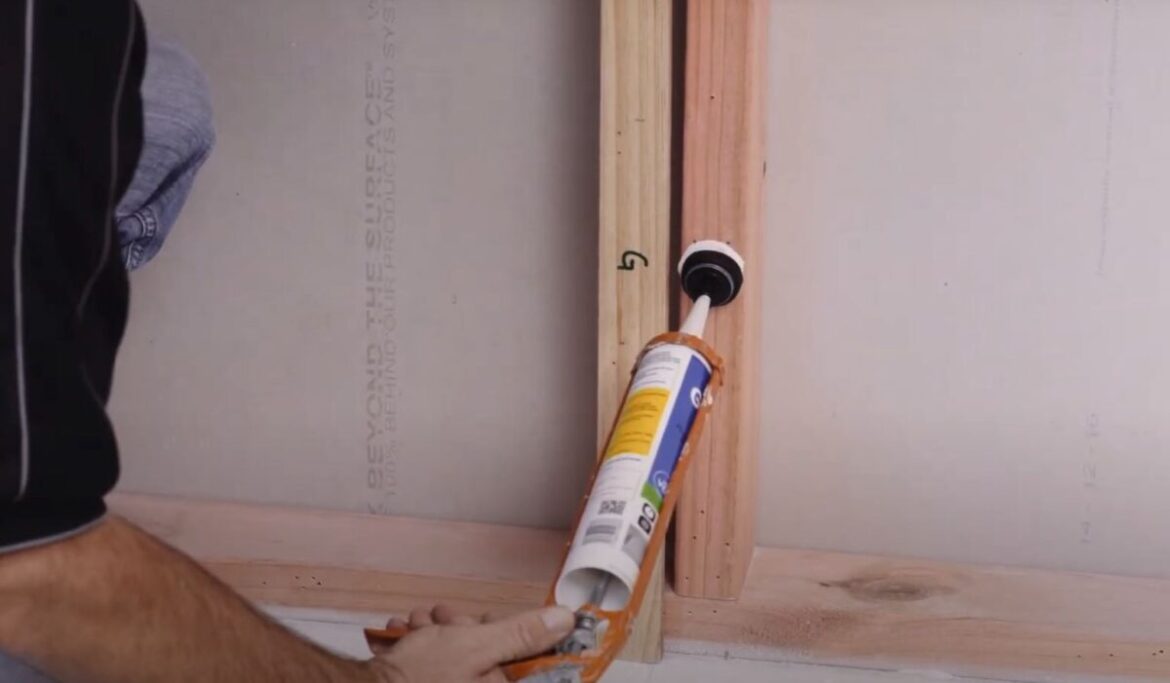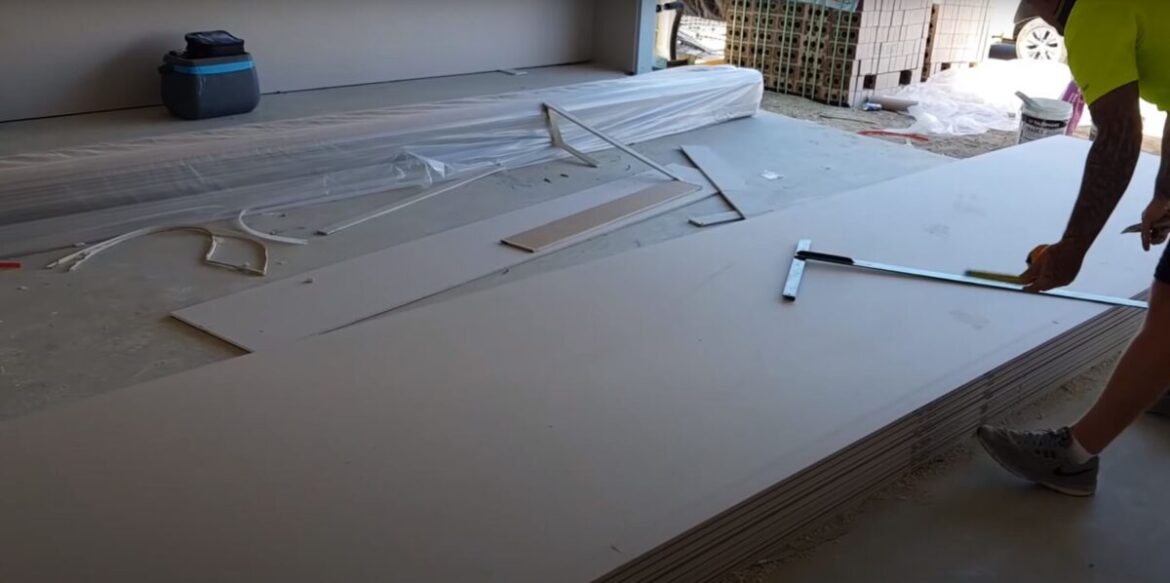Do You Have to Glue GIB?
GIB Installation: To Glue or Not to Glue
The Basics of GIB Board Installation
GIB, commonly known as plasterboard or drywall in other parts of the world, is a widely used construction material for walls and ceilings in Auckland. The boards are typically secured to framing using screws, nails, and in certain instances, adhesive glue.
Why Consider Gluing GIB?
Using adhesive glue can enhance the bond between the GIB board and the wall frame. The primary benefits include:
- Improved strength and stability
- Reduced risk of nail pops or screw indentations
- Better acoustic performance, cutting down on potential noise transfer
- Reduced fastener use, leading to a smoother finish, especially in high-end residential areas like Remuera
However, in suburbs like Manukau, where the humidity levels can be relatively high, moisture content in the air can affect the adhesive’s efficiency. Therefore, it’s vital to select the appropriate type of glue for specific environments.
Health and Safety Considerations
Like with all construction materials, certain health and safety precautions are crucial. Here’s what you should know:
- Some adhesives can release fumes, requiring adequate ventilation during the application.
- Wearing gloves, masks, and eye protection is essential to avoid direct contact and inhalation.
- Always refer to the manufacturer’s guidelines and New Zealand’s building codes when applying adhesive to GIB.
Different GIB Types and Their Features
| Type of GIB | Benefits | Disadvantages | Use Cases | Ingredients | Weaknesses | Flammability Rating | Mitigating Measures |
| Standard GIB | Cost-effective; Easy to install | Less resistance to moisture | Residential walls & ceilings | Gypsum, paper lining | Can soften when wet | Low | Avoid in damp areas |
| GIB Aqualine | Water-resistant; Durable | Slightly costlier | Bathrooms, laundries | Gypsum, silicone additives | Cost | Low | Ensure proper ventilation |
| GIB Noiseline | Sound insulating | Heavier; Costlier | Home theatres, bedrooms | Gypsum, denser core | Weight | Low | Secure with appropriate fixings |
| GIB Fireline | Fire-resistant | Heavier; Requires specialist installation | Commercial spaces, fire-prone areas | Gypsum, glass fibres | Weight; Cost | Very Low | Comply with fire codes |
When Might You Skip the Glue?
While gluing Gib can offer added benefits, it’s not always a necessity. For instance, when the frame is in excellent condition and there’s no need for additional soundproofing or when working on temporary structures or specific architectural designs.
Getting the Job Done Right
While understanding the intricacies of GIB installation is vital, it’s just as important to ensure a flawless finish. That’s where professionals come in. Collaborating with expert GIB Fixers, like those from Your Plasterers Auckland, can provide peace of mind and guarantee top-tier results tailored to Auckland’s unique conditions.
In conclusion, while it’s not always mandatory to glue GIB, doing so can provide multiple benefits. However, considering the specific needs of your project and seeking expert advice will always be the best approach.
GIB Installation Frequently Asked Questions:
Do I always need adhesive when installing GIB?
No, the necessity of adhesive depends on the project requirements, frame condition, and desired finish. While it can enhance the bond and provide a smoother finish, it’s not always mandatory.
Are there specific glues for different GIB types?
Yes, manufacturers often recommend particular adhesives to complement their GIB products. Ensure you consult product guidelines to achieve the best results.
Is gluing GIB more expensive than nailing or screwing?
While the adhesive itself can add to the costs, gluing can reduce the need for many fasteners. This can lead to savings in terms of material and labour, especially in the finishing stages.
How do humidity levels, like in Manukau, affect adhesive performance?
High humidity can impact the curing time and bond strength of certain adhesives. It’s vital to choose adhesives designed for such conditions or ensure optimal indoor conditions during installation.
Can I install GIB myself, or should I hire professionals?
While DIY installation is possible, hiring professionals, like those from Your Plasterers Auckland, ensures adherence to building codes, optimal material usage, and a superior finish.
Is GIB Fireline the only fire-resistant option available?
While GIB Fireline is specifically designed to be fire-resistant, other products might have fire-retardant properties. Always check the product specifications and consult experts when fire resistance is a priority.
What precautions should I take when working with adhesives on GIB?
Ensure adequate ventilation, wear protective gear like gloves, masks, and eye protection, and always refer to the manufacturer’s guidelines to avoid potential health risks.
GIB Installation Essentials
Adhesive Use Isn’t Always Mandatory
While adhesive can improve bond strength and the finish of GIB installations, it’s not always necessary. The specific requirements of the project, condition of the frame, and the desired outcome will determine its usage.
Auckland’s Climate Can Impact Adhesive Performance
Humidity levels in areas like Manukau can affect how adhesives cure and their eventual bond strength. It’s essential to consider local climate conditions when selecting adhesives for GIB installations.
GIB Type Dictates Adhesive Choice
Different GIB boards come with specific adhesive recommendations. Always check the manufacturer’s guidelines to ensure optimal compatibility and performance.
Professional Installation Can Make a Difference
While DIY approaches are feasible, professional services from firms like Your Plasterers Auckland can provide better adherence to building codes, efficient material usage, and a high-quality finish.
Safety Should Never Be Overlooked
Whether you’re using adhesive, nailing, or screwing the GIB, always ensure proper safety precautions, including using the right protective gear and ensuring adequate ventilation.
What are the Different Types of Gib?
The Gib Spectrum: Navigating Your Options in Auckland
Understanding the Gib Landscape
If you’re embarking on a home renovation in Auckland and Gib fixing is on the cards, you’ll want to familiarise yourself with the array of Gib types available. Gib, commonly known as plasterboard or drywall in other parts of the world, comes in various types, each with its unique characteristics and uses.
Standard Gib Board: The All-Rounder
- Features: This is the most commonly used Gib. It’s grey paper-faced and is suitable for walls and ceilings.
- Advantages: Versatility and cost-effectiveness.
- Limitations: Not ideal for high moisture or high impact areas.
Gib Aqualine: The Moisture Magnet
- Features: This Gib has a blue paper face, specifically designed for wet areas like bathrooms and laundries.
- Advantages: Offers high moisture resistance.
- Limitations: Slightly more expensive than the standard board.
Gib Noiseline: Auckland’s Urban Shield
- Features: A high-density core makes this plasterboard ideal for reducing noise, especially in bustling Auckland suburbs.
- Advantages: Offers acoustic insulation.
- Limitations: Heavier than other types and might require additional framing support.
Gib Fyreline: Safety First
- Features: Built with a pink paper face, this Gib is developed for areas that need fire resistance.
- Advantages: Offers fire protection, especially important for kitchen areas or garages.
- Limitations: Costlier than standard Gib board.
Navigating Auckland’s Suburb Specificities
Given Auckland’s diverse neighbourhoods, your Gib fixing approach might vary. For instance, Albany, with its contemporary housing developments, might see a higher demand for Gib Noiseline, ensuring urban noises stay out. In contrast, in the scenic coastlines of Hobsonville, residents might opt for Gib Aqualine in their beachfront properties, given the moist environment.
Auckland Council Bylaws and Exterior Plastering
When it comes to exterior plastering or solid plastering, Auckland Council has specific regulations, especially concerning buildings’ weathertightness. In suburbs like Albany and Hobsonville, adherence to these codes is paramount to ensure the durability and safety of your Gib work. Always engage with a professional before embarking on significant plastering projects, ensuring compliance with local regulations.
The Gib Fixer’s Toolkit
Fixing Gib isn’t just about the board; it’s also about having the right tools:
- Broadknives: Essential for applying and smoothing joint compound.
- Taping Knife: Helps in taping the joints.
- Sanding Pads: For smoothing out the finished surface.
- Joint Compound: Often referred to as “mud”, it’s used to finish the joints and screw holes.
Decoding Gib Types: A Quick Table
| Gib Type | Advantages | Limitations | Best Use Cases |
| Standard Gib Board | Versatile, Cost-effective | Not for moist/impact areas | General walls/ceilings |
| Gib Aqualine | Moisture-resistant | Slightly costlier | Bathrooms/Laundries |
| Gib Noiseline | Acoustic insulation | Needs added support | Urban homes/offices |
| Gib Fireline | Fire-resistant | More expensive | Kitchens/Garages |
Engage the Professionals
As enticing as a DIY Gib project sounds, the intricacies involved — from selecting the appropriate type of board to ensuring accurate fixing and finishing — make this task more complex than it might appear at first glance. Engaging a professional Gib fixing contractor in Auckland not only ensures a seamless finish but also guarantees adherence to local bylaws and regulations, ultimately ensuring peace of mind in your home renovation journey. Get in touch with Your Plasterers Auckland today.
Unravelling GIB: Frequently Asked Questions
What is the standard Gib board used for?
The standard Gib board, with its grey paper-face, is versatile and commonly used for general walls and ceilings in homes and offices.
How is Gib Aqualine different from the standard board?
Gib Aqualine is designed specifically for wet areas such as bathrooms and laundries. Its blue paper face distinguishes it, and it offers high moisture resistance.
When should I consider using Gib Noiseline?
Gib Noiseline is ideal for places where noise insulation is crucial. If you’re located in bustling parts of Auckland or require soundproof rooms, this high-density plasterboard is your best bet.
What’s unique about Gib Fireline?
Gib Fireline is crafted for areas that require fire resistance. Its pink paper face stands out, and it’s especially suitable for kitchens, garages, or areas adjacent to fireplaces.
Is there a type of Gib for high-impact areas?
Yes, there are specific Gib boards designed for high-impact areas, like rumpus rooms or garages, which can withstand more wear and tear than standard boards.
How do I recognise which type of Gib has been used in my home?
Often, the colour of the paper face can indicate the type of Gib. For instance, standard Gib has grey paper, Aqualine is blue, and Fireline is pink.
Can I use Gib Aqualine for my entire home?
While you can, it might not be cost-effective. Gib Aqualine is designed specifically for wet areas. Using it throughout the house would be over-specification and could increase your costs unnecessarily.
How often should Gib be replaced?
Gib doesn’t have a specific “expiry date”. Its longevity depends on factors like moisture exposure, physical damage, or structural issues. Regular inspections can help gauge if replacement is required.
Is there an eco-friendly Gib option?
Yes, there are Gib boards available that are manufactured with sustainability in mind, using recycled materials and producing reduced carbon footprints.
How does Auckland’s climate impact my Gib choice?
Auckland’s varying climates, especially in coastal areas, can influence your Gib choice. For instance, properties near the sea might benefit more from moisture-resistant Gib due to the saline environment.
Are there any Auckland-specific regulations regarding Gib installation?
While there are building codes and regulations concerning plasterboard installation, it’s always recommended to check with local councils or engage a professional in Auckland to ensure full compliance, especially in areas like Albany and Hobsonville where specific bylaws might apply.


